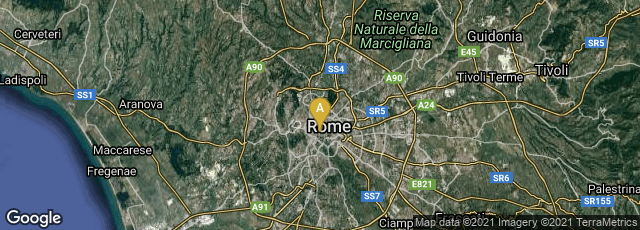

Completion of the inscription incised at the base of Trajan’s Column in Rome occurred in 113 CE. The inscription, which was set at the top of the column's 15-foot (4.5 m) pedestal, was defaced in the 9th or 10th century to accomodate a V-shaped gable placed over a door.
“This is perhaps the most famous example of Roman square capitals, a script often used for stone monuments, and less often for manuscript writing. As it was meant to be read from below, the bottom letters are slightly smaller than the top letters, to give proper perspective. Some, but not all, word divisions are marked with a dot, and many of the words, especially the titles, are abbreviated. In the inscription, numerals are marked with a titulus, a bar across the top of the letters” (Wikipedia article on Trajan's Column, accessed 08-09-2009).
According to Stan Knight, Roman inscriptions were usually completed with a layer of minium (red lead) painted in the incised letters. Minium can range in color from light to vivid red and may contain brown to yellow tints, such as burnt sienna. Knight, Historical Scripts from Classical Times to the Renaissance (2009) A2 (pp. 16-17, with excellent images)
♦ After the invention of printing by movable type in Europe in the mid-15th century, Roman letters from stone inscriptions became a major source of inspiration for punch-cutters and type designers. The fifteenth century Roman typeface designed by Nicolas Jenson, and the Roman typeface commissioned by Aldus Manutius and cut by Francesco Griffo, both of which are known as Antiqua, or "Venetian oldstyle", have been called syntheses of Roman stone inscriptions and Carolingian minuscule."